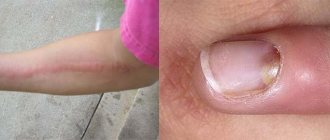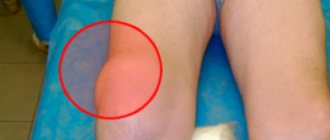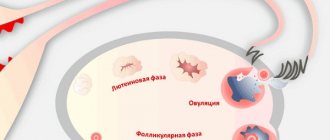The pressure exerted by blood on the walls of blood vessels is called blood pressure. This is one of the most important criteria for assessing a person’s health and well-being, since it speaks volumes about the state of the cardiovascular system. A person’s blood pressure, whether high or low, indicates the presence of serious diseases that require immediate intervention from a specialist. According to WHO, heart and vascular diseases are in first place among the leading causes of death. This sad statistics makes us think and take the most serious preventive measures.
If a person's blood pressure is high, the disease is called hypertension. As a rule, this disease does not come alone; it is accompanied by tachycardia (rapid heartbeat), angina pectoris (discomfort, pain, feeling of heaviness in the chest), bradycardia (sinus rhythm disturbance).
A person’s blood pressure, whether it is high or low, must be constantly monitored. If you are at risk, you must have a blood pressure monitor at home. It is necessary to regularly measure and record all data in order to track dynamics.
Causes of blood pressure fluctuations
White coat syndrome
The term “white coat syndrome” describes blood pressure that rises in the doctor's office. A study published in 2013 found that people with white coat syndrome should be monitored for risk factors for cardiovascular disease, especially abnormal blood sugar levels.
A 2021 meta-analysis published in the Journal of Hypertension found that people with white coat syndrome have a lower risk of heart disease and a better prognosis than people with long-term hypertension.
Use of medicines
Some drugs can temporarily lower blood pressure. They include:
- potassium-sparing diuretics
- beta blockers and other heart drugs
- tricyclic antidepressants
- medicines used for high blood pressure, especially if the dose is too high
- medicines used in the treatment of Parkinson's disease
- medications used to treat erectile dysfunction, especially if taken with nitroglycerin
Emotional distress, anxiety and stress
Strong emotions, especially stress and anxiety, can cause your blood pressure to spike. This is the body's natural response to a stressful event, and blood pressure will gradually return to normal as the person calms down. However, long-term stress and anxiety can have a detrimental effect on your blood pressure and overall health.
Temperature
Staying in a warm room or taking a hot bath can temporarily lower your blood pressure. This is usually not a cause for concern until your blood pressure drops too low.
Symptoms of dangerously low blood pressure include dizziness, nausea, and fainting.
Drugs
Cocaine and methamphetamine can cause blood pressure to spike.
Risk factors that may increase your risk of blood pressure changes:
- Irregular work schedule, especially with night shifts
- smoking and tobacco use
- high stress levels
- anxiety
- misuse of medications used for high blood pressure
- incorrect prescription and dosage of medications
- obstructive sleep apnea and other sleep disorders
- kidney diseases
- diabetes and blood sugar problems
- thyroid diseases
- heart disease
- conditions affecting the nervous system
Can blood pressure change in a short period of time?
Can the pressure change in a few minutes, that is, very quickly? Rapid changes in the state of blood pressure occur against the background of strong atmospheric changes, even in people with problem-free health, not only throughout the day, but also in a very short time, for example, in a matter of minutes.
The reason for this may be:
- Severe physical stress. Difficult working conditions, emergency work mode and other extraordinary situations can lead to an immediate increase or decrease in pressure.
- Diet. A sudden jump in blood pressure often occurs after eating an excessive amount of trigger foods (coffee, salt, chocolate, sugar, fast foods, etc.).
- Taking medication. A rapid increase in blood pressure is caused by Paracetamol, anti-inflammatory and vasoconstrictor medications. Drugs of the narcotic group provoke sudden fluctuations in blood levels, which pose a clear threat to humans.
- Bad habits. Excessive alcohol consumption and frequent smoking, as well as hangover syndrome, lead to a narrowing of the vascular lumen, thereby contributing to a rise in blood pressure.
- Menstruation. In women, a change in pressure over a short period can occur in the middle of the menstrual cycle or several days before the onset of “red days”. In this situation, there is a rapid decline.
- Pregnancy. During the period of bearing a child, dramatic changes occur in the female body, the cardiovascular system experiences especially increased stress, which leads to sudden sharp changes in blood pressure.
- Overexcitation of the central nervous system. Prolonged fatigue, stress, excessive joyful and negative emotions, and doing hard work can cause a rapid rise or fall in blood pressure.
- Meteor dependence. A sharp change in weather conditions has an extremely negative impact on the blood pressure of people who do not tolerate weather changes very well.
- Traveling by plane. The pressure in the cabin of an airliner during flight is equal to atmospheric pressure at an altitude of 2.5 thousand meters above sea level. When the atmospheric level decreases, the volume of oxygen in the cabin of an air machine decreases significantly, which leads to a sharp increase in blood pressure in humans.
- Other situations. Hiking high in the mountains or diving into the sea at great depths provoke an immediate increase in blood levels.
Home Remedies and Lifestyle Changes
- Quit smoking
: Smoking damages your arteries and causes high blood pressure. - Consume more fruits, vegetables, whole grains and lean protein
: reduce or eliminate added sugars and processed foods. - Exercise regularly
: A person should do moderate-intensity exercise, such as brisk walking, for 30 minutes a day, at least 5 days a week. - Limit your alcohol intake
: Women should have no more than one serving (drink containing 10 grams of alcohol, such as one bottle (0.33 ml)) of alcoholic drink per day, and men no more than two. Drinking more alcohol can increase your blood pressure. - Meditation, deep breathing, guided imagery and other stress management techniques
can help prevent blood pressure spikes. - Eat less sodium
: Excessively salty foods can cause your blood pressure to spike. - Reduce caffeine intake
: Caffeinated drinks can cause spikes in blood pressure.
The relationship between high blood pressure and obesity
Excess weight is one of the most important factors causing high blood pressure. Excess adipose tissue provokes swelling and various disturbances in the functioning of the body. Obesity also means low physical activity, and physical inactivity is another serious factor that provokes high blood pressure.
Obesity often develops due to age-related changes, in particular due to a slowdown in metabolic processes. Advanced age in itself is the cause of arterial hypertension, and in combination with obesity this is almost 100% increased blood pressure.
Complications
Blood pressure can increase the risk of heart attacks or peripheral artery disease. Regular fluctuations in blood pressure can increase your risk of developing conditions such as:
- heart attack
- stroke
- heart failure
- kidney disease
- decreased vision
- sexual dysfunction
- peripheral artery disease
A 2021 study found that older adults with daily fluctuations in blood pressure are more likely to develop dementia. This is supported by the results of a 2021 study that showed a link between high blood pressure variability and decreased cognitive ability and memory.
conclusions
The state of a person's blood pressure is subject to the circadian rhythm. If your life style, work and rest schedule takes place in a measured order, then the increase and decrease in blood pressure occurs without acute changes and is quite predictable.
Periodic fluctuations in blood counts are caused not only by the biorhythm of the human body, age and physiological state, but also by some external factors.
If the deviations have a significant gap, the cause may be coffee or alcohol consumption, emotional stress, or physical fatigue.
(
2 ratings, average: 3.50 out of 5)
How to measure blood pressure correctly
To avoid possible pathologies and serious diseases, even a healthy person needs to measure their blood pressure once a month. However, you need to measure it correctly and be better prepared before doing so.
How to prepare for diagnosis:
- It is not recommended to drink strong tea and coffee. You must refrain from doing this at least an hour before the test.
- It is also recommended to avoid sports and cigarettes.
- If you need to take any medications, read the instructions. Many drugs affect the cardiovascular system. It is better to give them up during the study.
- Before starting the measurement, the patient must rest for at least 7-10 minutes.
Following these recommendations will help determine normal blood pressure readings and identify possible deviations.
Changing blood pressure at least 3 times during the day will give an accurate idea and a signal for consultation with a doctor.
How to measure blood pressure using a tonometer:
- Sit comfortably, relax the muscles of your arm and place it on the table. Place a cuff on the shoulder in proportion to the position of the heart.
- Make sure the cuff size matches your hand size as closely as possible. You need to be especially careful if the patient is overweight.
When is the best time to take measurements:
- First in the morning - although an hour after sleep and on an empty stomach.
- In the evening - either before dinner or after dinner, two hours later.
It is advisable to take measurements twice, leaving an interval of at least a minute between measurements.
It is best to write down the indicators somewhere. If the difference is small, then there is no need to worry - this is normal. If the values are very different, then you should definitely consult a doctor.
ABPM method - daily monitoring
Daily blood pressure monitoring allows you to identify hidden pathologies and diseases.
This is a measurement of pressure using automatic special equipment. Such a study lasts at least a day. The device independently saves readings at a certain time. This method is used to find out which values are optimal for a patient depending on the time of day. You can diagnose hypertension and (if it exists) select the appropriate medications.
The cuff is placed on the patient's shoulder and the monitor is placed (either on a belt or on a belt). In this case, a person leads a normal lifestyle, carrying a special device with him.
How to accurately determine a person's blood pressure
To obtain an accurate blood pressure reading, a tonometer is most often used. If monitoring with its help takes place at home, it is better to use an automatic or semi-automatic device, because the manual version can be used if you have certain skills.
To ensure that the readings obtained during measurement are accurate, you should follow some recommendations:
- before the study, do not smoke, avoid high physical activity;
- do not eat immediately before monitoring;
- sit comfortably, leaning on the back of the chair;
- put your hand at chest level, preferably on a flat surface;
- do not move while measuring blood pressure values, do not talk;
- Take readings from both hands, maintaining an interval of 10 minutes.
If the obtained value deviates greatly from the age norm, you should consult a specialist for advice, examination, and, if necessary, undergo a course of therapy.
Is there a norm
When diagnosing blood pressure, there is the concept of upper (systolic) and lower (diastolic) pressure.
Normally, the upper values should range from 110 to 140 mm. rt. Art., and the lower numbers should not be less than 70 mm. rt. Art.
Depending on the characteristics of the body, blood pressure may vary for each person. There is also such a thing as “working” pressure. This is a condition when the values of upper and lower blood pressure may deviate from the norm, but the person feels normal. “Working” indicators can be determined by a specialist.
Table: clinical recommendations for blood pressure norms
| Age | Upper blood pressure readings (mm Hg) | Diastolic blood pressure indicators (mm Hg) | Pulse (beats per minute) |
| 0–12 months, boys | 96 | 66 | 130–140 |
| 0–12 months, girls | 95 | 65 | 130–140 |
| 2–10, boys | 103 | 69 | 95–100 |
| 2–10, girls | 103 | 70 | 95–100 |
| 11–20, boys | 123 | 76 | 70–80 |
| 11–20, girls | 116 | 72 | 70–80 |
| 21–30, men | 129 | 81 | 60–80 |
| 21–30, women | 127 | 80 | 65–90 |
| 31–40, men | 129 | 81 | 70–80 |
| 31–40, women | 127 | 80 | 75–85 |
| 41–50, men | 135 | 83 | 70–80 |
| 41–50, women | 137 | 84 | 75–90 |
| 51–60, men | 142 | 85 | 65–75 |
| 51–60, women | 144 | 84 | 65–80 |
The most optimal indicators are 120 by 80 mm. rt. Art.
But even here there are boundaries that are also normal or relatively normal:
- 130 to 85 mm Hg. Art.
- 130 (139) by 85 (89) mm. rt. Art. - normal blood pressure, but slightly elevated.
You also need to take into account the patient’s age when taking measurements:
- For boys over one year old, the optimal values are 96 by 66 mm. rt. Art., and for girls – 95 to 65.
- For children over ten years old – 103 to 69 (figures for boys) and 103 to 70 (for girls);
- For people over twenty years old - 123 to 76 (values for guys), 116 to 72 (for girls);
- For older people, the numbers also change! In this case, men can have optimal indicators of 142 over 85, and women - 144 over 85.
With age, normal blood pressure values increase slightly, so this factor must also be taken into account when taking measurements.
Natural remedies for high blood pressure
High blood pressure in the morning is a fairly common phenomenon.
To cope with this pathology, it is important to first identify and eliminate the cause that caused the fluctuations. Blood pressure (BP) is an indicator that varies depending on certain conditions. When measurements at rest and during sleep are within normal limits, and immediately after waking up they rise to dangerous levels, you should think about your health and look for the cause of the pathological condition.
Fluctuations in blood pressure are explained by the fact that the production of hormones differs at different times of the day, and during sleep the body does not work at full capacity.
The man got enough sleep, got up, but felt terrible. Blood pressure measurements showed that the numbers on the tonometer were too high. Why does high blood pressure bother you in the morning, because the body should have rested and recovered overnight?
Hypertension is a common but dangerous pathology, which is characterized by increased blood pressure.
Most often, the disease appears in women after 40 years of age.
The pressure begins to rise quite slowly. The person begins to feel the following symptoms:
- weakness,
- dizziness,
- fatigue,
- numbness of fingers,
- headache.
A person can observe the listed signs of the disease for several years. Afterwards, interruptions in the functioning of the heart and kidneys appear, as well as clear signs of poor circulation in the brain. If you leave high blood pressure after 50 and do not return normal pressure, the consequence may be a heart attack.
Currently, doctors are recording an increasing number of cases of high blood pressure in people over 30 years of age.
The causes of this pathological condition are constant psycho-emotional stress and stress. In addition, hypertension appears in women who have a genetic predisposition to it. Also, a negative environment plays a role in the development of the disease and high blood pressure.
Signs of high blood pressure also increase if your diet is high in saturated fatty acids. They are found in coconut, palm fats and animal fat.
There are hidden fats that should also not be consumed by those who have developed destructive symptoms. Hidden fats are found in:
- cheeses,
- sausages,
- cookie,
- chocolate,
- cakes.
Symptoms of high blood pressure occur due to excessive salt intake. Thus, the quality of blood vessels deteriorates and structural changes appear in the arteries. Normal blood pressure also becomes rare due to excessive alcohol consumption, which provokes a strong heartbeat.
An important factor in the appearance of high blood pressure is a sedentary lifestyle and constant stress. In an intense work environment, a person performs large amounts of work, which causes tension. An increase in blood pressure may be a physiological reaction to a stressful situation.
The most important factors in the development of high blood pressure include:
- smoking and alcohol,
- excess weight,
- heredity,
- negative external environment: chemicals, noise and vibration.
Hypertension often occurs due to kidney disease or traumatic brain injury.
In addition, symptoms of high blood pressure may occur after menopause, as well as while taking certain medications, which will be indicated by unpleasant symptoms. Often in women between 20 and 30 years old, normal blood pressure disappears due to constant use of oral contraceptives.
In many cases, people after 30 years of age do not feel high blood pressure for some time. This is the main danger of this pathology.
Delayed treatment seriously undermines the health of the sick person and even threatens his life, as a stroke or heart attack develops. Most often, high blood pressure has the following symptoms:
- sense of anxiety,
- nausea,
- disruption of the functioning of the heart muscle,
- chest pain,
- headache,
- dizziness.
If an increase in blood pressure is observed for a long time, the following symptoms appear:
- swelling,
- poor blood circulation,
- shortness of breath with minor exertion.
In medicine, blood pressure is differentiated into:
- systolic - pressure at the moment of heart contraction,
- diastolic - pressure during myocardial relaxation.
Pressure indicators depend on the characteristics of the person and his age. The following types of blood pressure are distinguished:
- pulse,
- lower,
- top.
Blood pressure can decrease or increase due to changes in atmospheric pressure, stress, anxiety and physical activity. Over the years, the tonometer readings always change.
Blood pressure is usually measured in millimeters of mercury.
There are only two numbers that show blood pressure. The upper (systolic) pressure indicates the strength of the heart's contractions, while the lower (diastolic) pressure indicates vascular tone during relaxation of the heart muscle.
The normal systolic (upper) pressure ranges from 112-132. As for diastolic (lower) pressure, in women from 30 to 50 years old it is 67-82. For women over 55 years of age, the norm is 79–88 mmHg. Thus, the norm for a woman aged 30 years is from 125/80 to 130/82 mm Hg. Art.
In women aged 40 years, normal blood pressure is 127/80. When a woman crossed the line of 50–55 years, her indicators were 137/84. After 60 years, the normal blood pressure level is 144/85.
A woman at 70 years old has a normal blood pressure of 159/85, and after 80 years the parameter is 157/83. At 90 years old, the best indicator is 150/79 mmHg.
If in a woman after 40 years of age, normal blood pressure values can increase to 145/90, then in people after 55 years of age the figure is 150 per 90 mm R. With. With age, an increase in blood pressure is also observed in hypotensive patients.
At the same time, any minor fluctuations in blood pressure are not a reason to determine the presence of pathology. The indicators are individual for each person.
In 20% of cases, the causes of high lower blood pressure in women after 30 years of age are considered to be a lack of physical activity, stress, junk food and alcohol. In this case, the upper pressure can remain normal. There may be deposition of cholesterol and fibrin on the walls of blood vessels.
Diastolic pressure can increase before age 30 and after age 55 in women. Sometimes the causes of the pathology are not identified, but, as a rule, the condition occurs due to diseases of the thyroid gland, kidneys and weakening of cardiac output.
A woman during pregnancy is sensitive to various changes in the body, this is especially true for women after 30 years of age. Problems with blood pressure during pregnancy can harm the unborn baby. Gestational blood pressure is especially dangerous; in the third trimester of pregnancy, women over 40 years of age experience sudden changes in blood pressure.
Until 22 weeks of pregnancy, blood pressure is within normal limits. But due to the active production of progesterone, the indicator may change by 10 mmHg, either down or up. The norm for a pregnant woman is from 120/70 to 140/90 mmHg. Art. Increased blood pressure in women after 40 years of age often leads to fetal heart attacks.
A slight increase in blood pressure may occur in pregnant women after the 20th week of pregnancy, which continues for some time, but the symptoms are not pronounced. This condition is called gestational high blood pressure.
Particular attention should be paid to gestational blood pressure if a woman:
- there was high blood pressure during previous periods of pregnancy,
- obesity before pregnancy,
- age after 40 years.
If a woman over 30 years of age has diabetes or chronic kidney disease, in most cases she will have high blood pressure.
Doctors advise women suffering from hypertension to undergo therapy before becoming pregnant. This is especially true for women over 40 years old. In some cases, doctors may only recommend premature birth.
Treatment
If a woman over 50 years of age suffers from high blood pressure, under no circumstances should she prescribe medication on her own. You should consult a doctor and start spending time on physical exercise.
Physical activity must be carefully selected in order to be performed with pleasure. Normal blood pressure will be observed if you take daily walks and be in nature. You cannot lead a sedentary lifestyle and overeat.
To prevent the development of pathology, after 55 years of age, weight gain should be monitored more carefully. Women who are overweight always have an increased risk of developing hypertension.
In addition, review your diet by reducing the amount of salt. With high blood pressure, especially in women over 40 years of age, it is necessary to exclude:
- coffee,
- smoked meats,
- sugar,
- fatty foods
- fast food.
To maintain normal blood pressure, you need to eat fish, raisins, cabbage, bananas and garlic more often.
During drug treatment, it is also useful to eat tomatoes, strawberries and make salads with raw carrots during the ripening season.
Complications
It is well known that people suffering from hypertension are more susceptible to atherosclerosis. Therefore, both stroke and heart attack are more common in people with high blood pressure. In addition, with hypertension, lameness may develop, since after 55 years, normal blood circulation in the legs deteriorates.
The most common complication is pressure on the heart. The body is forced to constantly work under increased loads. With this pathology, the heart cannot cope with its functions, so blood circulation changes in a large and small circle. The following symptoms appear:
- dyspnea,
- hemoptysis,
- swelling of the limbs.
Such consequences often lead to death.
- Celery. The compounds found in celery oil help relax and stretch the muscles that line your arteries. This helps regulate blood pressure.
- Potassium in the diet. Potassium-rich foods (such as bananas, oranges, spinach, and zucchini) may lower blood pressure. WARNING: These foods may be harmful to kidney problems—check with your doctor.
- Grape juice is a good way to maintain normal blood pressure.
- Black Seed Oil: Its active ingredients will lower cholesterol levels and help control blood pressure. It is enough to consume one teaspoon of this oil daily (can be mixed with fruit juice or tea)
- Ginkgo biloba. The medicinal herb increases blood circulation in the body by dilating blood vessels.
- Baked potatoes are also an effective remedy for treating hypertension.
- Fenugreek seeds should be taken twice a day, on an empty stomach.
- Watermelon is another good remedy to prevent high blood pressure. Also, a teaspoon of dried watermelon seeds, ground into powder on an empty stomach twice a day with water, helps prevent high blood pressure.
- Basil leaves (1-2 leaves) on an empty stomach will relieve high blood pressure.
- Eating fresh papaya on an empty stomach for 15 to 20 days helps in treating hypertension.
Risk factors
The following factors may increase your risk of dangerous fluctuations in blood pressure:
- Irregular work schedule, especially on the night shift.
- smoking and tobacco consumption
- high stress levels
- excitement
- misuse of blood pressure medications
- improper prescription or dosage of blood pressure medications
- obstructive sleep apnea and other sleep disorders
- kidney disease
- diabetes and blood sugar problems
- thyroid problems
- heart disease
- conditions affecting the nervous system
How to treat hypertension
Various methods can be used to treat hypertension.
Non-drug methods
These include:
- adequate physical activity;
- minimal alcohol consumption;
- weight loss;
- to give up smoking;
- eliminating salt from the diet;
- increasing the amount of food of plant origin in the menu, excluding animal fats from the menu.
Drug therapy
Medicines are started when other methods have not worked, or blood pressure levels are too high. In addition, this is required in the presence of serious pathologies.
These include:
- diabetes;
- development of hypertensive crisis;
- malfunctions of target organs;
- kidney pathologies;
- atherosclerosis of the coronary arteries;
- hypertrophy of the left ventricle of the heart muscle.
For mild cases of the disease, tablets are prescribed, this is aimed at reducing blood pressure levels to normal levels relative to the patient’s age.
It is possible to use several drugs, the dosage of which is determined taking into account the readings on the tonometer, as well as the presence of aggravating factors.
We recommend reading: Hyperium for hypertension, an effective remedy










